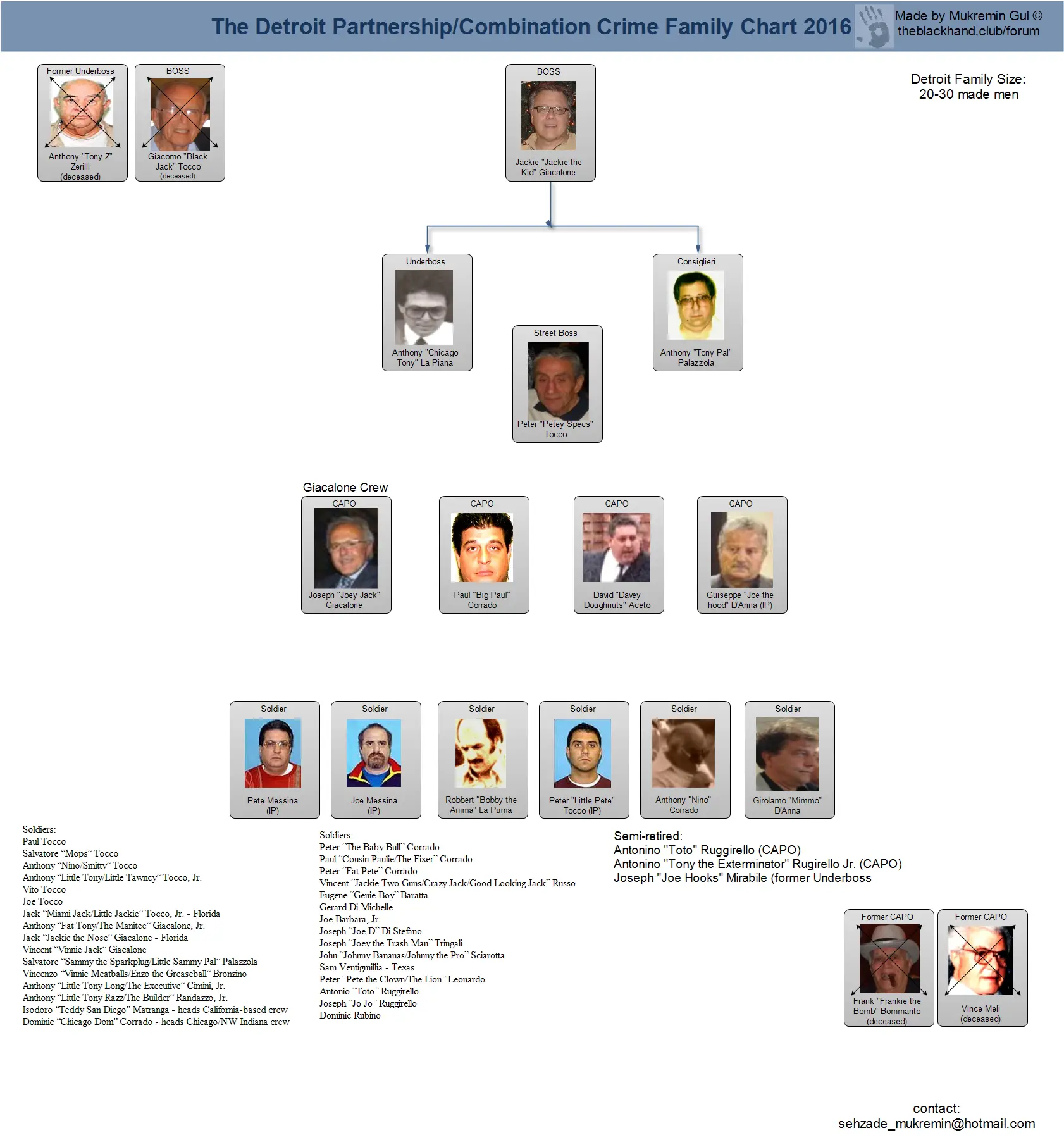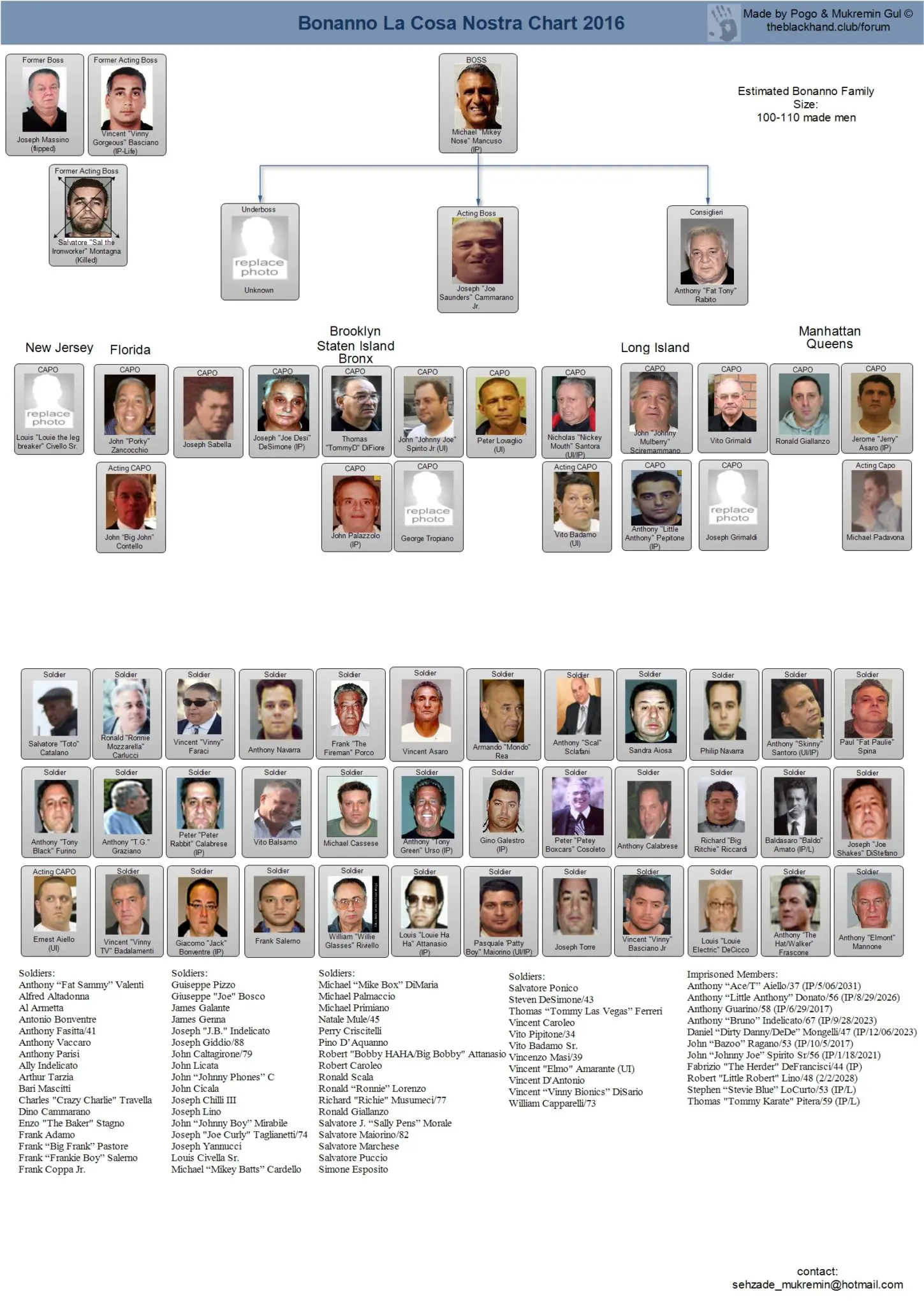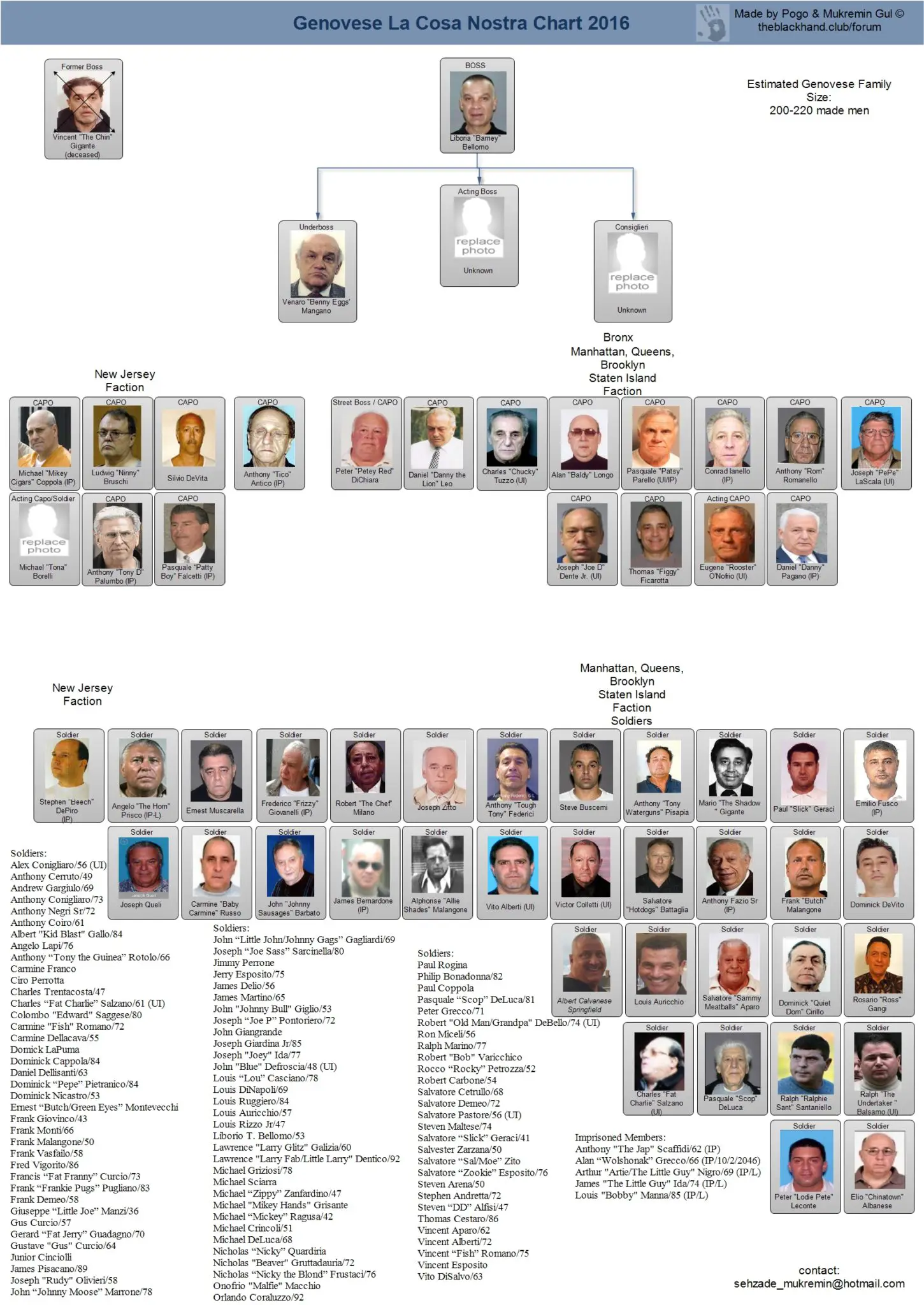Picture this: a secret world where power is distributed through a well-organized structure, and every member knows their role. This isn't just a movie plot or a book series; it's the real deal - the mafia hierarchy. Understanding this hidden system is like peeling back the layers of an onion, each one revealing something new and intriguing. So, buckle up, because we're diving deep into the shadows of organized crime!
The mafia hierarchy is more than just a group of bad guys in fancy suits. It's a complex structure that has evolved over centuries, shaping the way crime operates on a global scale. Think of it as a business, but instead of selling products, they deal in power, fear, and influence. This isn't your average corporate ladder, though; it's a world where loyalty is everything, and betrayal can cost you your life.
But why does it matter? Well, understanding the mafia hierarchy isn't just for crime enthusiasts or those binge-watching The Sopranos. It's about recognizing how these organizations impact society, politics, and even the economy. So, whether you're a curious mind or a budding criminologist, this article will break it down for you. Let's get started, shall we?
- Practical Nursing Nyc Your Ultimate Guide To Pursuing A Rewarding Career
- Goran Viscaronnji263 The Talented Actor Who Stole Hearts On Er And Beyond
Understanding the Mafia Hierarchy
Now, let's get into the nitty-gritty. The mafia hierarchy isn't some random setup; it's a meticulously designed system. At its core, it's all about control, authority, and maintaining order within chaos. Imagine a pyramid where each level has a specific role, and everyone knows their place. It's almost like a corporate structure, but with a lot more drama and danger.
Key Players in the Mafia Hierarchy
So, who's who in this hidden world? Here's a quick rundown:
- The Boss: The big guy at the top. He calls the shots and makes the final decisions. Think of him as the CEO of a criminal empire.
- The Underboss: The right-hand man to the boss. He's the guy who does the dirty work and ensures everyone follows the rules.
- The Consigliere: The advisor or counselor. He's the brains behind the operation, offering strategic advice and resolving conflicts.
- Soldiers: These are the foot soldiers, the ones who carry out the orders. They're the muscle, the enforcers who keep things running smoothly.
Each role is crucial, and they all work together to maintain the structure. It's like a well-oiled machine, where every part plays its part. But remember, this isn't just about titles; it's about power and influence.
- Roland Garros Schedules Your Ultimate Guide To The French Open
- Renee Estevez The Rising Star In Hollywood You Need To Know About
The Structure of the Mafia Hierarchy
Let's take a closer look at how the mafia hierarchy is structured. It's not just a random group of people; it's a highly organized system with clear lines of authority. Imagine a pyramid, where each level has specific responsibilities and powers.
Levels Within the Mafia Hierarchy
Here's how it breaks down:
- La Cosa Nostra: The top level, where the most powerful families reside. They're the ones who make the big decisions and control the flow of power.
- Families: Each family has its own hierarchy, with its own boss, underboss, and consigliere. Think of them as individual branches of a larger corporation.
- Crews: These are smaller groups within each family, led by a capo. They handle specific operations and report back to the family.
- Soldiers and Associates: The lowest level, but still crucial to the operation. They're the ones who do the grunt work and carry out orders.
It's a system that's built on loyalty, trust, and respect. But it's also a world where betrayal can have deadly consequences. So, every member has to be careful and strategic in their actions.
History of the Mafia Hierarchy
Now, let's talk about where it all began. The mafia hierarchy didn't just pop up overnight; it has a rich and complex history. It started in Sicily, where families banded together to protect their communities from invaders and outlaws. Over time, this system evolved into the organized crime networks we know today.
Key Events in Mafia History
Here are some key moments that shaped the mafia hierarchy:
- The Rise of Cosa Nostra: In the late 19th century, the mafia began to establish itself in Sicily, creating a formal structure and code of conduct.
- Migration to the U.S.: As Italians migrated to America, they brought their traditions with them, including the mafia. This led to the rise of powerful crime families in cities like New York and Chicago.
- The Prohibition Era: The 1920s and 30s were a golden age for the mafia, as they capitalized on the illegal alcohol trade. This period solidified their power and influence in America.
Understanding the history of the mafia hierarchy helps us see how it has evolved over time. It's not just about crime; it's about adaptation and survival in a constantly changing world.
Modern Mafia Hierarchy
Fast forward to today, and the mafia hierarchy is still alive and kicking. While it may not be as prominent as it once was, it's still a powerful force in organized crime. The modern mafia has adapted to new challenges and opportunities, using technology and globalization to expand its reach.
How the Mafia Has Evolved
Here are some ways the modern mafia hierarchy has changed:
- Global Expansion: The mafia has spread beyond Italy and the U.S., establishing operations in countries around the world.
- Technological Advancements: The use of technology has changed the way the mafia operates, from cybercrime to money laundering.
- Changing Tactics: The mafia has had to adapt to new laws and enforcement strategies, finding new ways to stay one step ahead of the authorities.
Despite these changes, the core principles of the mafia hierarchy remain the same. It's still all about power, control, and maintaining order within chaos.
Impact on Society
So, what does all this mean for society? The mafia hierarchy has a significant impact on the world, both positive and negative. On one hand, it contributes to crime and corruption, undermining the rule of law and democracy. On the other hand, it provides jobs and opportunities for those who might otherwise be left behind.
Positive and Negative Effects
Here's a breakdown:
- Positive Effects: The mafia has been known to provide protection and services to communities that are neglected by the government. They also create jobs and stimulate local economies.
- Negative Effects: The downside is obvious - crime, violence, and corruption. The mafia thrives on fear and intimidation, using these tools to maintain control and power.
It's a complicated relationship, one that has sparked debate and discussion for decades. Is the mafia a necessary evil, or a force that needs to be eradicated? That's a question that's still up for grabs.
Legal Battles Against the Mafia
Of course, no discussion of the mafia hierarchy would be complete without talking about the efforts to combat it. Governments around the world have waged war against organized crime, trying to dismantle the structures that keep the mafia in power.
Key Legal Strategies
Here are some of the strategies that have been used:
- RICO Laws: In the U.S., the Racketeer Influenced and Corrupt Organizations Act has been a powerful tool in fighting the mafia.
- International Cooperation: Countries have worked together to share information and resources, making it harder for the mafia to operate across borders.
- Community Engagement: Educating and empowering communities to resist mafia influence has been a key strategy in many places.
While progress has been made, the mafia hierarchy remains a formidable opponent. It's a constant battle, one that requires vigilance and determination from law enforcement agencies and the public alike.
Conclusion: The Future of the Mafia Hierarchy
So, where does the mafia hierarchy go from here? It's a question that many experts are asking. With globalization and technology changing the game, the mafia has had to adapt to survive. But one thing is certain - the core principles of power, control, and loyalty will always remain.
In conclusion, the mafia hierarchy is a complex and fascinating system that has shaped the world in countless ways. Whether you're a fan of crime dramas or a student of history, there's no denying its impact. So, the next time you watch a movie or read a book about the mafia, remember that there's more to it than just the story on the screen.
And now, it's your turn. What do you think about the mafia hierarchy? Do you think it's a necessary evil, or a force that needs to be eradicated? Share your thoughts in the comments below, and don't forget to check out our other articles for more insights into the world of organized crime!
Table of Contents
- Mafia Hierarchy: The Hidden World of Power and Influence
- Understanding the Mafia Hierarchy
- Key Players in the Mafia Hierarchy
- The Structure of the Mafia Hierarchy
- Levels Within the Mafia Hierarchy
- History of the Mafia Hierarchy
- Key Events in Mafia History
- Modern Mafia Hierarchy
- How the Mafia Has Evolved
- Impact on Society
- Positive and Negative Effects
- Legal Battles Against the Mafia
- Key Legal Strategies
- Conclusion: The Future of the Mafia Hierarchy



Detail Author:
- Name : Valentine Stehr
- Username : daphney15
- Email : effertz.delphia@hermann.biz
- Birthdate : 2004-05-02
- Address : 52824 Delpha Square Valentinastad, ME 01524
- Phone : 347-741-0011
- Company : Wehner-O'Keefe
- Job : Trainer
- Bio : Temporibus nam saepe blanditiis praesentium dolor excepturi nam odit. Consequatur culpa veritatis autem sapiente aliquid. Sint provident voluptas fugiat voluptas.
Socials
linkedin:
- url : https://linkedin.com/in/watson_dev
- username : watson_dev
- bio : Fuga est earum dolore tempora.
- followers : 4576
- following : 2083
tiktok:
- url : https://tiktok.com/@wvonrueden
- username : wvonrueden
- bio : Enim quis earum reiciendis architecto minima.
- followers : 2307
- following : 2235
facebook:
- url : https://facebook.com/vonruedenw
- username : vonruedenw
- bio : Inventore soluta vel est rem qui ullam in nam.
- followers : 6343
- following : 2106